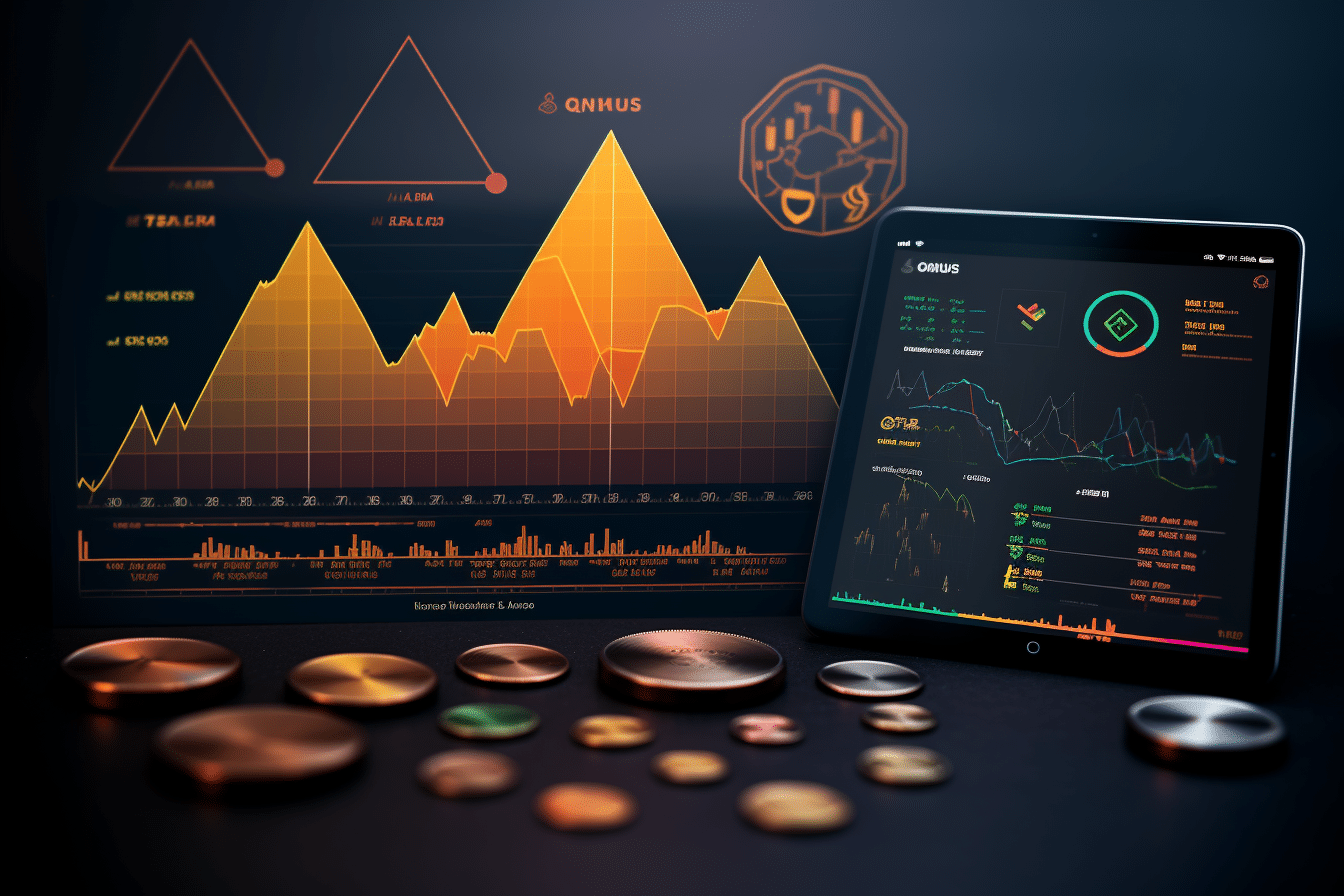Aftermath of the Last Bitcoin Halving: 5 Essential Insights

The aftermath of the last Bitcoin (BTC) halving has played a transformative role in shaping the cryptocurrency landscape. This event, which reduced mining rewards by half, has had profound implications for market dynamics, mining operations, and investor strategies.
Exploring five key insights derived from this event offers a deeper understanding of its impact on the supply, demand, and overall ecosystem of digital currency.
Bitcoin halving 2020: Insights on the aftermath
 Taking a look at the last Bitcoin halving
Taking a look at the last Bitcoin halving
As we are nearing the 2024 Bitcoin halving cycle, it’s time to look back at the last Bitcoin halving. Here are some key insights:
1. Reduction in Bitcoin inflation rate
The 2020 Bitcoin halving marked a critical milestone in the cryptocurrency’s history by cutting the block reward from 12.5 to 6.25 bitcoins. This halving event effectively reduced the rate at which new bitcoins entered the market, significantly impacting Bitcoin’s inflation rate.
This deflationary mechanism enhanced Bitcoin’s appeal as a digital store of value, aligning it with the concept of “digital gold.” The reduced inflation rate and increased scarcity played a pivotal role in shaping Bitcoin’s price dynamics in the post-halving period.
2. Increased mining difficulty and consolidation
As the block reward was halved, miners experienced a substantial decrease in their rewards for securing the network and validating transactions. This reduction in profitability posed challenges, particularly for miners with higher operational costs.
Consequently, the mining industry witnessed a period of consolidation, with less efficient miners either shutting down or being pushed out of the market. This consolidation led to an increase in Bitcoin’s mining difficulty as only the most efficient and well-capitalized miners could continue to participate competitively.
3. Impact on Bitcoin’s price
The impact of the 2020 Bitcoin halving on its price was closely observed by the crypto community and financial markets. While the immediate aftermath exhibited some price volatility, Bitcoin eventually embarked on a notable bull run, reaching new all-time highs.
This price surge was attributed to the reduced supply of new bitcoins combined with increasing demand from both retail and institutional investors. It demonstrated the historical trend of Bitcoin’s price rising significantly following halving events, validating the stock-to-flow model’s predictive power regarding Bitcoin’s scarcity-driven price appreciation. Navigating the impact of COVID-19 on Bitcoin
Navigating the impact of COVID-19 on Bitcoin
4. Increased institutional interest
Following the 2020 halving, Bitcoin attracted unprecedented institutional interest. Major corporations, financial institutions, and high-profile investors recognized Bitcoin’s potential as a digital store of value and an effective hedge against inflation.
This influx of institutional capital not only contributed to Bitcoin’s price appreciation but also played a crucial role in legitimizing cryptocurrencies as an asset class among traditional investors. It underscored the growing acceptance of digital assets as a vital component of diversified investment portfolios.
5. Acceleration of crypto adoption and innovation
The bullish market sentiment triggered by the 2020 halving accelerated the broader adoption of cryptocurrencies and fostered innovation within the crypto ecosystem. This period saw significant growth in decentralized finance (DeFi) platforms, the emergence of non-fungible tokens (NFTs), and the development of novel blockchain technologies.
The increased market capitalization of Bitcoin and other cryptocurrencies attracted more talent, companies, and investors to the space, leading to innovative use cases, applications, and the overall expansion of the crypto and blockchain industries.
The aftermath of the 2020 Bitcoin halving not only solidified Bitcoin’s position as a digital store of value but also revealed the intricacies of the cryptocurrency market, the mining sector, and their interconnected impact on the broader crypto ecosystem.
The impact of COVID-19 on Bitcoin prices
The COVID-19 pandemic has had a profound impact on global financial markets, including the cryptocurrency market, particularly Bitcoin. Initially, the outbreak of the pandemic in early 2020 led to widespread panic and uncertainty across all asset classes, causing Bitcoin’s price to plummet in March 2020 alongside stock markets and commodities.
According to a research report by Fortune Business Insights, the price of Bitcoin fell below $4000 on March 12, 2020. This event occurred due to a tragic drop in the S&P index in the United States. This sudden drop was part of a broader liquidity crisis, as investors sought to liquidate assets into cash amidst growing fears of a global economic downturn.
However, this initial impact was short-lived, as Bitcoin quickly rebounded, outperforming many traditional assets in the following months. The recovery and subsequent price surge were largely attributed to Bitcoin’s perceived role as a digital safe haven and a hedge against inflation.
These qualities became particularly appealing as governments around the world implemented large-scale quantitative easing measures to mitigate the economic impact of the pandemic. Taking a peek at the next Bitcoin halving
Taking a peek at the next Bitcoin halving
When is the next Bitcoin halving?
The next Bitcoin halving is anticipated to occur in the first half of 2024, based on the Bitcoin protocol, which halves the block reward approximately every four years or every 210,000 blocks. This event will reduce the reward for mining a new block from the current 6.25 bitcoins to 3.125 bitcoins.
The exact date of the halving is difficult to predict due to the variable nature of block confirmation times, but it will happen around April or May 2024, depending on the network’s hash rate between now and then.
This upcoming halving will mark another significant milestone in Bitcoin’s lifecycle, potentially influencing its price, mining dynamics, and broader interest in cryptocurrency.
How to prepare for the upcoming Bitcoin halving?
Preparing for the next Bitcoin halving requires strategic planning and a keen eye on the evolving cryptocurrency landscape. Here are five unique and interesting steps to consider as we approach the next halving event:
1. Understand Bitcoin’s stock-to-flow (S2F) model
The S2F model predicts Bitcoin’s price based on its scarcity. Additionally, it comprises the ratio of existing Bitcoin stock against the flow of new Bitcoin production. Familiarizing yourself with this model can provide insights into potential price movements post-halving.
By understanding the implications of reduced block rewards on Bitcoin’s scarcity, you can better gauge the halving’s long-term impact on its value.
2. Explore mining opportunities or partnerships
The halving will decrease block rewards, significantly impacting mining profitability. It’s an opportune time to assess the viability of entering the mining sector or forming partnerships.
With the right strategy and access to low-cost electricity and efficient mining hardware, there could be lucrative opportunities despite the reduced block reward. Additionally, consider joining a mining pool to mitigate risks and ensure steadier rewards.
3. Diversify with altcoins showing halving potential
While Bitcoin halvings capture the most attention, other cryptocurrencies also undergo similar events or have mechanisms that limit their supply.
Diversify your portfolio with select altcoins that have upcoming supply-constraining events or strong fundamentals. This could provide alternative investment opportunities and hedge against Bitcoin-specific market fluctuations.
4. Prepare for volatility with advanced trading strategies
The halving is likely to increase Bitcoin’s price volatility in the short term. Preparing advanced trading strategies such as automated trading bots, stop-loss orders, and options for hedging can help manage risk. Additionally, consider setting aside a portion of your portfolio for swing trading. This capitalizes on the volatility to make short-term gains while maintaining a long-term Bitcoin holding strategy. Exploring the future of Bitcoin and the next halving cycle
Exploring the future of Bitcoin and the next halving cycle
Wrapping up
Reflecting on the last Bitcoin halving reveals its significant influence on Bitcoin’s price, mining community, and the broader cryptocurrency market. These insights underscore the halving’s role in promoting Bitcoin’s scarcity, attracting institutional interest, and fostering technological advancements.
The lessons learned from this event will be invaluable for navigating future challenges and opportunities in the digital asset space.
Thanks for reading! If you liked the post, don't forget to follow.















































